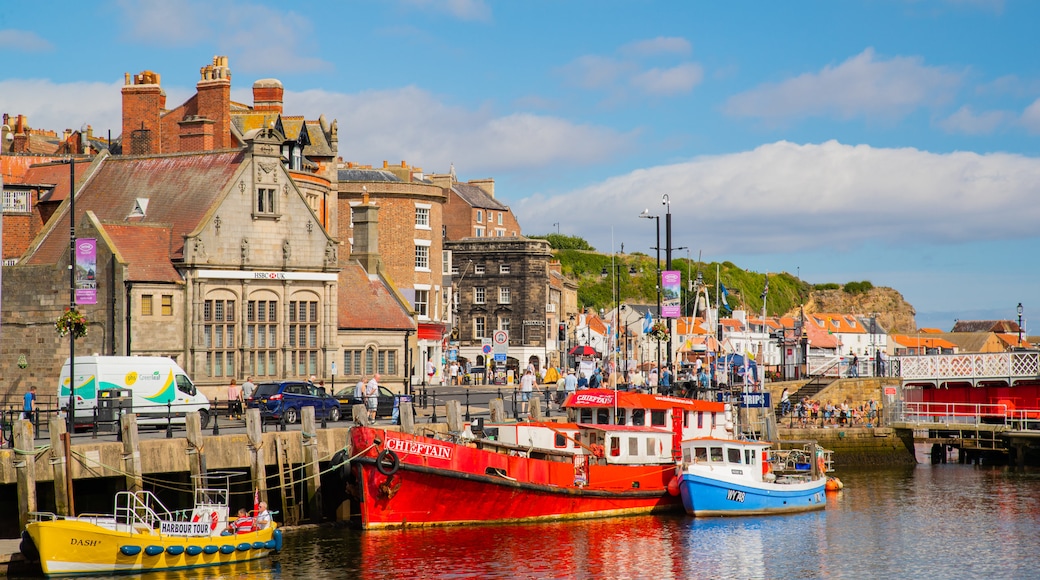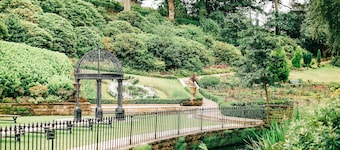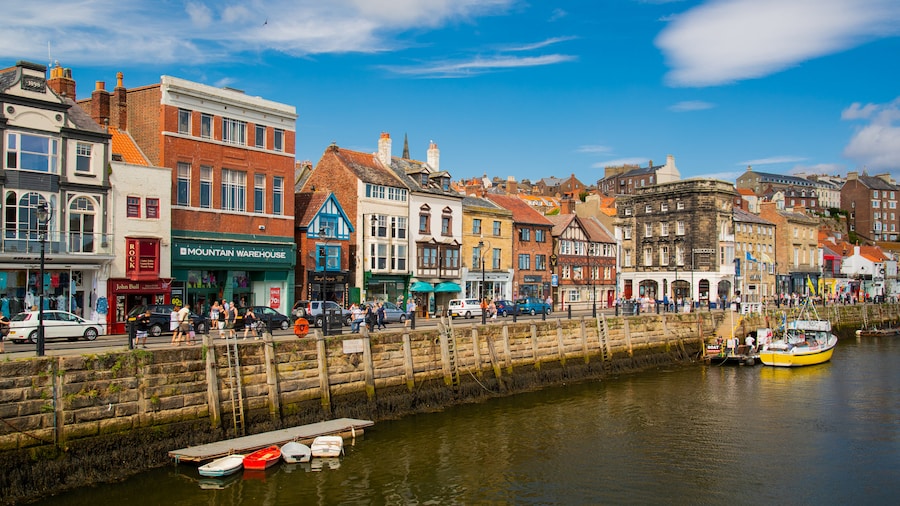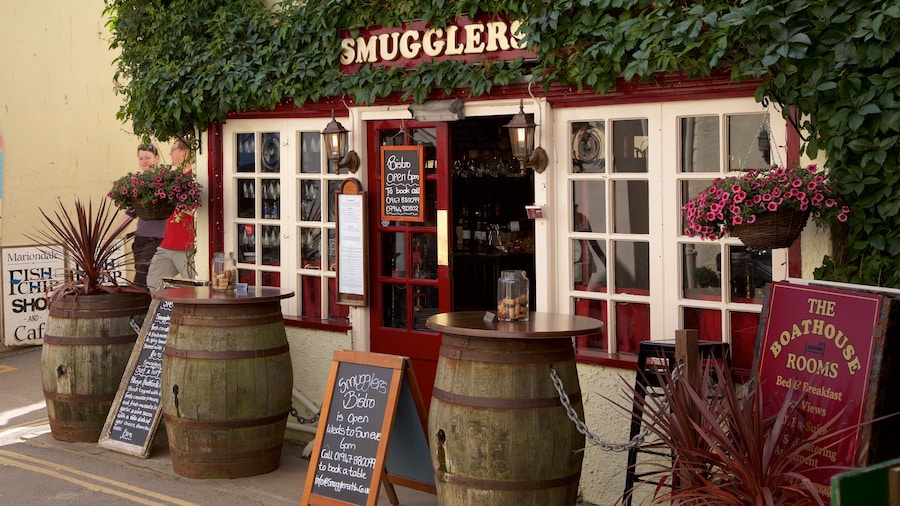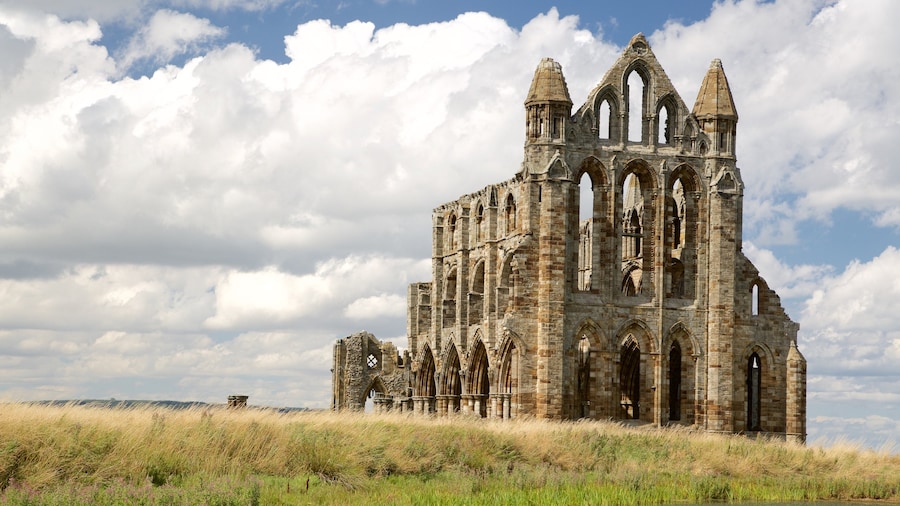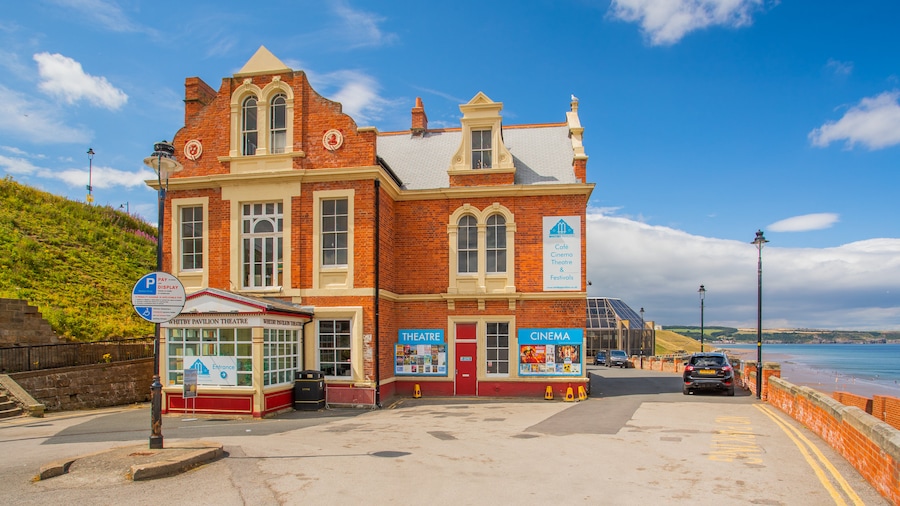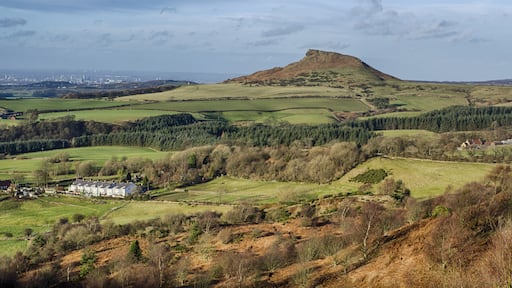Enjoy picturesque clifftop views in the town where Dracula took form and Captain Cook learned his trade.
Built around the River Esk, Whitby is a quaint town with rugged cliffs and scenic beaches. Captain James Cook studied in this quiet fishing commune in the 17th century, before sailing to distant lands.
Among the highlights is Whitby AbbeyOpens in a new window, whose dramatic gothic ruins inspired 19th-century writer Bram Stoker to write Dracula. Marvel at the tall arches that remain and learn about monastic life through the interactive exhibitions in the Mansion Visitor Centre. The abbey was home to the earliest recognised English poet, Cædmon. Follow in the footsteps of the fictional vampire by climbing the 199 Steps from shore.
Continue pursuing the Dracula theme at the adjacent Church of St. Mary, which was founded in 1110. The eerie hilltop graveyard is a setting in the novel. Admire the mix of styles in the fortress-like church that has views of the city and the river as it enters the North Sea.
Descend the steps to reach the riverside Captain Cook Memorial MuseumOpens in a new window for another part of Whitby’s fascinating history. Learn about the 18th-century seafarer and his trips to Australia, New Zealand and others parts of the world then unknown to Europeans. Browse the exhibitions in this house where he trained as an apprentice. Read letters he wrote about his experiences.
Cross the central bridge to reach the western side of Whitby, where you will find Pannett Park. This tranquil green space contains the Pannett Art Gallery and the Whitby Museum among the pretty floral displays and woodland patches. Enjoy a picnic under the trees and visit the museum terrace for views of the sea.
The coastal town is just north of the city of Scarborough in the northeastern region of England. It is in the North York Moors National Park in North Yorkshire. Drive about 250 miles (400 kilometres) to reach the town from LondonOpens in a new window, which should take 5 or 6 hours.
Whitby is a small town that helped shape the history of literature and geography in a big way.

